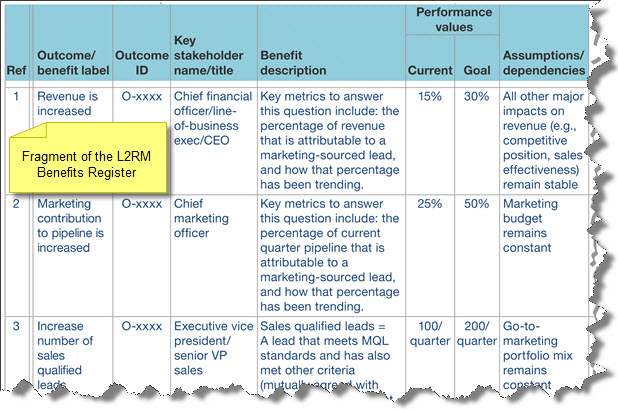Plan, Don’t Hope, For Lead-to-Revenue Benefits
Marketing execs forecast a great number of top and bottom line results in order to get the budget to automate the lead-to-revenue process, fuel content marketing, and drive the marketing flywheel for lead production. Unfortunately, benefits don’t always happen according to plan. In fact, they don’t always happen. This leaves marketing leaders in a risky situation — no safety net, no assurances, and no soft landing — when it comes to accounting for the return on all that investment.
That’s the problem I set out to address in the most recent document in Forrester’s Playbook on Lead to Revenue Management. The report "Plan, Don't Hope, For Lead-To-Revenue Benefits" (subscription required) gives marketers a framework — and offers three actionable tools — that can be used together to jumpstart and sustain a benefits realization discipline in your marketing organization:
- The L2RM benefits results chain identifies the relationship between benefits. The L2RM results chain make it easy to see the causal relationship between benefits at the tactical execution level (e.g. improve campaign performance) the strategic level (e.g. increase marketing contribution to pipeline) and the business level (e.g. increase profitable revenue). Using a results chain to model your L2RM benefits can take some time, but the end result is an artifact that makes the link between new L2RM initiatives and benefits incandescently clear.
- The L2RM benefits register helps expose the full potential of your L2RM initiative. The benefits register is a listing of all potential positive outcomes of the L2RM program, which you can derive from results chain modeling or other approaches. You should develop the benefits register before you develop your business case. First create a rough-cut view of your anticipated L2RM benefits. Then determine the relevant stakeholders and engage those people and share the register. Pinpoint the most significant outcomes and filter out the less important ones.

- The L2RM benefits realization plan keeps the focus on key L2RM outcomes. While it's useful to identify all important outcomes on the benefits register, you can only realistically manage for a limited number of outcomes. If your benefits register has, say, 25 entries, then you might consider developing benefits realization plans for five to 10 of those outcomes. The benefits realization plan is a tool used to construct formal plans (outcomes, metrics, actions, responsibilities, targets and monitoring actuals, and reporting). It can also help you narrow down ‘what to report’ on your marketing dashboard.
At first glance, this looks like a lot of new, additional — and perhaps unnecessary — administrative overhead. But if you've already given thought to your expectations for L2RM, these tools are a natural extension of your thinking. We’ve included templates and guidance for each of these tools to make it easier for you to put this “theory” into “practice”.
Key Takeaway: It's OK to right-size your benefits management rigor. But never forget that without demonstrable benefits, your L2RM program is a demonstrable waste of time and money.
